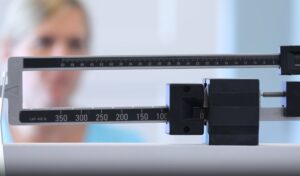Are you looking to transform your body but confused about the roles of muscle and fat? Understanding the difference between muscle density and fat is crucial in this journey. This article explores the science behind these two, offering practical strategies for body transformation.
What Do You Need to Know?

Muscle and fat are two critical components of our bodies, each serving different functions. Muscle tissues are involved in everything from movement to maintaining posture, while fat serves as an energy reserve and protects vital organs.
Muscles also play a key role in regulating metabolism and body temperature. Fat, in addition to its protective role, helps in the absorption of essential vitamins and provides cushioning for the joints. Interestingly, muscle and fat tissues also communicate with each other, influencing overall health and physical performance.
Muscle Density: The Powerhouse
Muscle density refers to the amount of muscle fibers within a given volume. Higher muscle density means more muscle fibers, leading to greater strength and endurance. Dense muscles contribute to a higher basal metabolic rate (BMR), meaning you burn more calories at rest.
This increased muscle mass also improves glucose metabolism, reducing the risk of diabetes and other metabolic disorders. Furthermore, high muscle density enhances physical capabilities, making daily activities easier and improving athletic performance.
Fat: The Energy Store
Body fat, on the other hand, is a form of stored energy. While essential in moderate amounts for insulation and protection, excess fat can be detrimental to health. It can lead to various health issues, including heart disease, diabetes, and joint problems.
However, it’s important to note that not all fat is harmful; essential fat plays a crucial role in hormone regulation and reproductive health. The key is maintaining a healthy balance, ensuring adequate fat levels to support bodily functions while avoiding excess accumulation that leads to health complications.
The Role of Diet in Muscle and Fat Composition

Diet plays a pivotal role in determining your muscle and fat composition. The food you consume directly influences how your body develops muscles and stores fat. A well-balanced diet not only fuels your workouts but also impacts your overall body composition, muscle mass, and fat levels.
Protein: Building Blocks of Muscle
For muscle building, a diet rich in protein is essential. Proteins are the building blocks of muscle, aiding in repair and growth. Consuming adequate protein supports muscle hypertrophy, the process of muscle enlargement from exercise. It’s not just about quantity; the quality of protein also matters.
Sources like lean meats, eggs, dairy, and legumes are excellent for muscle development.
Carbohydrates and Fats: The Energy Sources
Carbohydrates and fats are primary energy sources. While carbs are necessary for energy, excess intake can lead to increased fat storage. Carbohydrates, especially complex ones like whole grains, provide sustained energy for workouts.
Fats, particularly unsaturated fats found in nuts, seeds, and fish, play a key role in hormone production and nutrient absorption. However, balancing the intake of these nutrients is crucial to avoid excess body fat accumulation.
Exercise: The Key to Transforming Body Composition

Exercise is fundamental in altering the ratio of muscle to fat in your body. It’s not just about losing weight; it’s about changing the body’s composition to be leaner and more muscular.
Regular exercise not only improves muscle tone and strength but also enhances overall health and wellness. By incorporating a variety of exercises, you can target different muscle groups and optimize fat burning.
Strength Training For Building Muscle Density
Strength training exercises, like weight lifting, increase muscle density. They stimulate muscle fibers, leading to growth and increased metabolism. This type of training is not just for bodybuilders; it benefits everyone by improving bone density, joint functionality, and even mental health.
Consistent strength training also helps in maintaining muscle mass as you age, countering natural muscle loss. It’s important to progressively increase the intensity of workouts to continue challenging the muscles, which leads to further gains in muscle density and strength.
Cardiovascular Exercises For Burning Fat
Cardio exercises, such as running or cycling, are effective in burning fat. They increase heart rate and calorie burn, helping in fat loss. These exercises also improve cardiovascular health, increasing lung capacity and reducing the risk of heart disease.
Incorporating high-intensity interval training (HIIT) within cardio routines can maximize fat burning and boost metabolism. It’s vital to balance cardio with strength training, as too much cardio can lead to muscle loss, which can slow down metabolism.
Regular cardio exercise not only aids in weight loss but also enhances endurance, making daily activities easier to perform.
The Importance of Consistency and Patience
Transforming your body composition is a gradual process. Consistency in diet and exercise is key. Patience is essential as visible changes take time. It’s important to note that fluctuations in weight and appearance are normal and part of the journey.
Sticking to your goals even when progress seems slow is crucial for long-term success. Additionally, being consistent helps in forming habits that contribute to a sustainable lifestyle change, rather than seeking quick fixes that are often not lasting.
Combating Common Myths
There are several myths surrounding muscle and fat transformation. One common myth is that muscle weighs more than fat. In reality, muscle is denser than fat, meaning it occupies less space for the same weight.
Another myth is that you can convert fat directly into muscle. However, these are two different tissues, and the process involves reducing fat mass while increasing muscle mass. Lastly, many believe that weightlifting is only for those who want to bulk up, but in truth, it’s an effective way for anyone to increase muscle density and boost metabolism.
FAQs
How long does it typically take to see a noticeable change in body composition?
The time it takes to see a noticeable change in body composition varies from person to person, depending on factors like diet, exercise intensity, and genetic predispositions. Generally, consistent individuals might start seeing changes in as little as 6 to 8 weeks. However, more significant transformations often take several months or even a year.
Can I focus on just diet or exercise, or do I need both for effective body transformation?
Both diet and exercise are critical for effective body transformation. While diet plays a key role in fat loss and muscle gain, exercise is essential for increasing muscle density and overall fitness. Neglecting either aspect can significantly slow down or hinder your progress.
Is it possible to gain muscle without gaining fat?
It is possible to gain muscle without significantly gaining fat, a process often referred to as ‘lean bulking’. This requires a well-structured diet and exercise program that focuses on a slight caloric surplus with high protein intake and regular strength training.
Do genetics play a role in muscle density and fat loss?
Yes, genetics can play a role in muscle density and fat loss. Some individuals may find it easier to gain muscle or lose fat due to their genetic makeup. However, with the right training and diet, most people can make significant improvements in their body composition.
Is it necessary to use supplements to increase muscle density?
While supplements can aid in muscle growth and recovery, they are not necessary for everyone. A balanced diet rich in proteins, vitamins, and minerals is often sufficient for increasing muscle density. Supplements should be considered as an addition, not a replacement, to a healthy diet.
How can I tell if I am losing fat and not muscle during my transformation?
To ensure you’re losing fat and not muscle, focus on gradual weight loss (about 1-2 pounds per week), include strength training in your routine, and maintain a protein-rich diet. Monitoring your body measurements and observing how your clothes fit can also provide insights into your body composition changes.
Summary
Understanding the differences between muscle density and fat is vital in your body’s transformation journey. By focusing on a balanced diet and consistent exercise routine, you can effectively alter your body composition.
Remember, the path to transformation requires patience, dedication, and a clear understanding of the roles of muscle and fat. Start your journey today and embrace the change for a healthier, stronger you.













